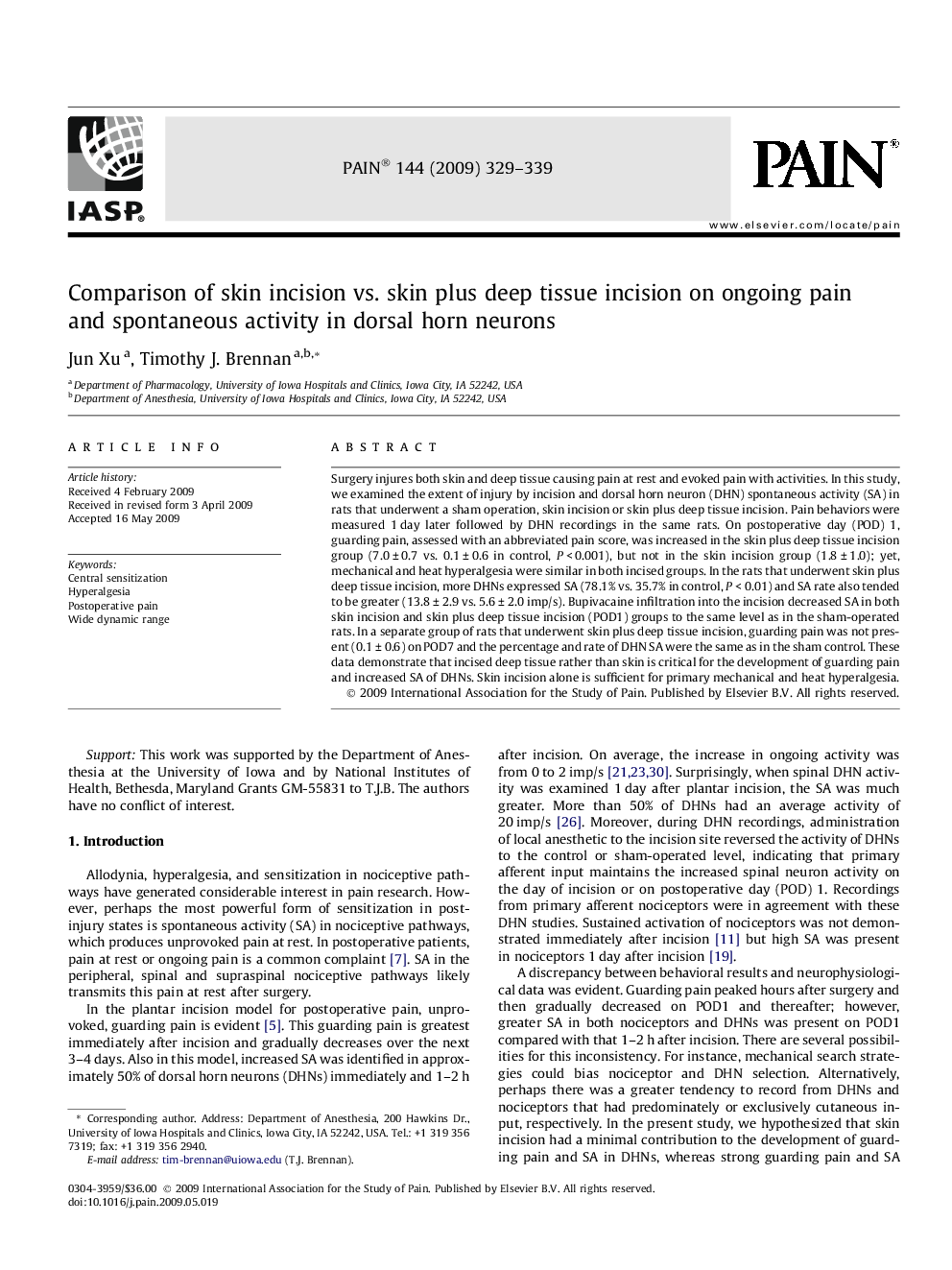| کد مقاله | کد نشریه | سال انتشار | مقاله انگلیسی | نسخه تمام متن |
|---|---|---|---|---|
| 914493 | 918400 | 2009 | 11 صفحه PDF | دانلود رایگان |
عنوان انگلیسی مقاله ISI
Comparison of skin incision vs. skin plus deep tissue incision on ongoing pain and spontaneous activity in dorsal horn neurons
دانلود مقاله + سفارش ترجمه
دانلود مقاله ISI انگلیسی
رایگان برای ایرانیان
کلمات کلیدی
موضوعات مرتبط
علوم زیستی و بیوفناوری
علم عصب شناسی
علوم اعصاب سلولی و مولکولی
پیش نمایش صفحه اول مقاله

چکیده انگلیسی
Surgery injures both skin and deep tissue causing pain at rest and evoked pain with activities. In this study, we examined the extent of injury by incision and dorsal horn neuron (DHN) spontaneous activity (SA) in rats that underwent a sham operation, skin incision or skin plus deep tissue incision. Pain behaviors were measured 1 day later followed by DHN recordings in the same rats. On postoperative day (POD) 1, guarding pain, assessed with an abbreviated pain score, was increased in the skin plus deep tissue incision group (7.0 ± 0.7 vs. 0.1 ± 0.6 in control, P < 0.001), but not in the skin incision group (1.8 ± 1.0); yet, mechanical and heat hyperalgesia were similar in both incised groups. In the rats that underwent skin plus deep tissue incision, more DHNs expressed SA (78.1% vs. 35.7% in control, P < 0.01) and SA rate also tended to be greater (13.8 ± 2.9 vs. 5.6 ± 2.0 imp/s). Bupivacaine infiltration into the incision decreased SA in both skin incision and skin plus deep tissue incision (POD1) groups to the same level as in the sham-operated rats. In a separate group of rats that underwent skin plus deep tissue incision, guarding pain was not present (0.1 ± 0.6) on POD7 and the percentage and rate of DHN SA were the same as in the sham control. These data demonstrate that incised deep tissue rather than skin is critical for the development of guarding pain and increased SA of DHNs. Skin incision alone is sufficient for primary mechanical and heat hyperalgesia.
ناشر
Database: Elsevier - ScienceDirect (ساینس دایرکت)
Journal: PAIN® - Volume 144, Issue 3, August 2009, Pages 329-339
Journal: PAIN® - Volume 144, Issue 3, August 2009, Pages 329-339
نویسندگان
Jun Xu, Timothy J. Brennan,